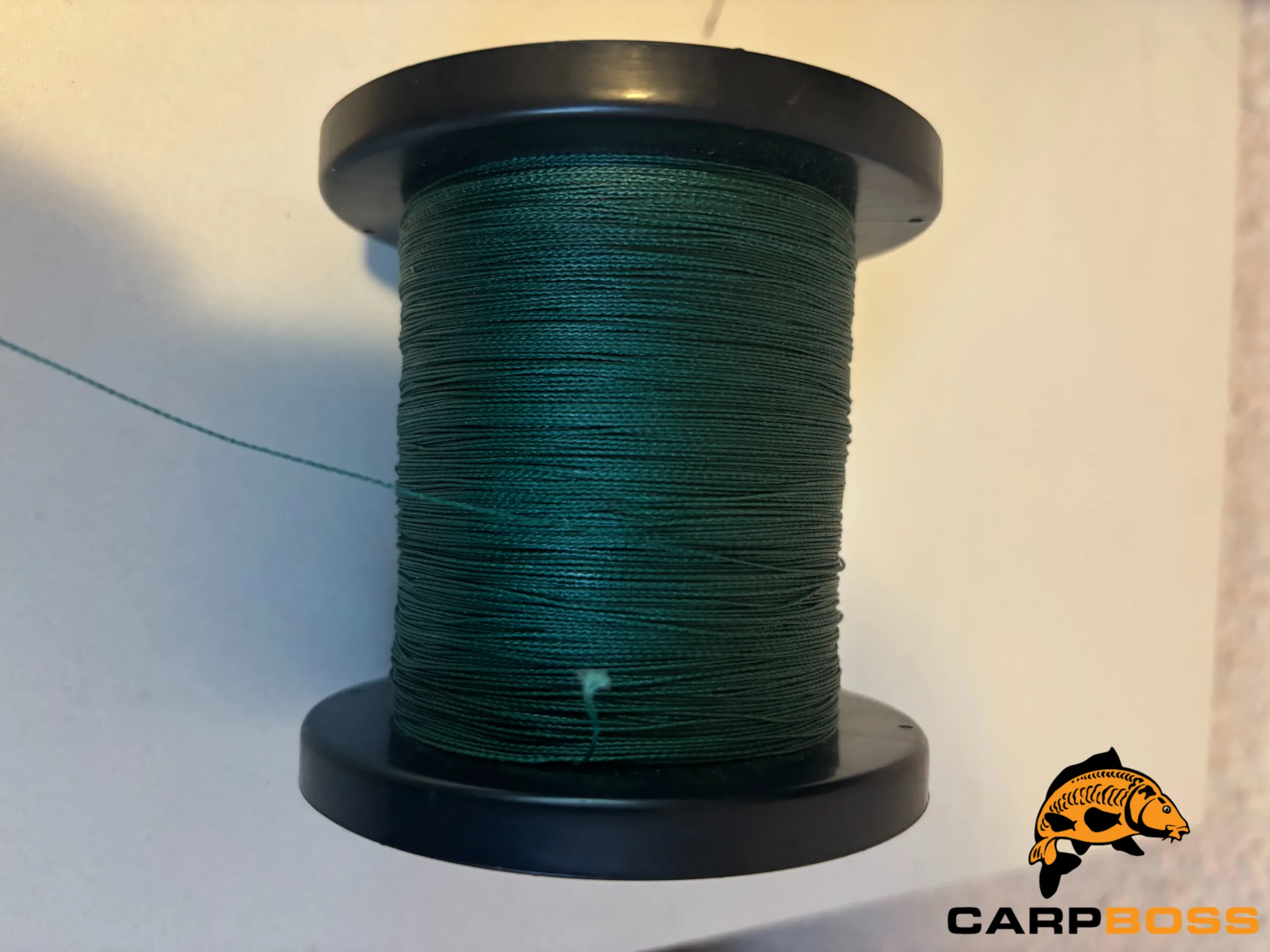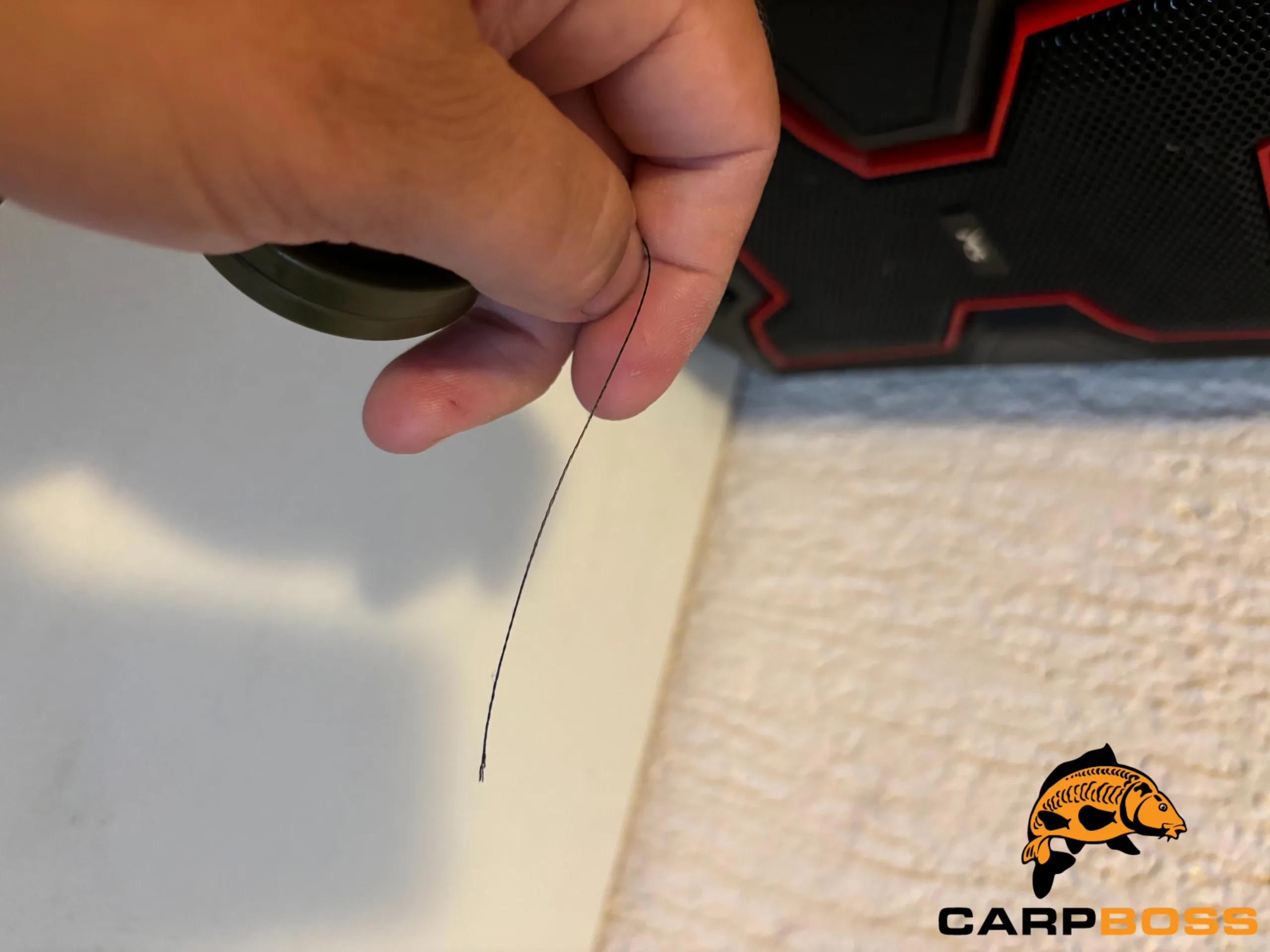A while ago I wrote about striped bass fishing and whether you should use braid or mono for striped bass. But, when it comes to choosing between x4 or x8 braid for fishing in general, anglers often find themselves weighing the pros and cons of each option. The number of carriers in the braid can make a significant difference in performance, knot strength, and overall usability. In this article, we will delve into the pros and cons between the 4-stranded braids and 8-stranded braids to help you make the right decision for your fishing needs.
Difference Between x4 and x8 Braids
When it comes to choosing the right braided fishing line, understanding the composition of it is crucial. One key factor to consider is the number of carriers, or strands, that make up the braid. The more carriers, the smoother and rounder the line will be, resulting in longer casting distances and less friction as the line passes through the guides on the lure retrieve.
For example, an eight-strand braid offers a high breaking strength and is smoother. However, the tradeoff is that it may be less abrasion resistant and more likely to bury into itself on the spool compared to a 4-strand braid.
On the other hand, a four-strand braid is a thinner diameter braid and it is great for situations where an additional line on the reel is necessary. The four carriers provide increased abrasion resistance and ease of use for knot tying and line management.
We’ll dig deeper into casting distance differences and fishing techniques for each type of braid. But this information should be enough for now, even for beginner anglers.

Strength and Durability – x4 or x8 Braid, Which Offers More?
Tensile Strength Comparison
For comparison purposes, let’s use the Daiwa J-Braid. Its X8 and X4 lines have different characteristics when it comes to tensile strength. The X8, with its eight carriers, is known for its softness and smoothness, making it a popular choice for many anglers.
On the other hand, the X4, with its four carriers, is stiffer and has better abrasion resistance, which can be beneficial when fishing around snags and obstacles, or when you want to avoid wind knots. In terms of knot strength, the X8 may have a slight edge due to its softer nature, but the X4’s stiffness can also contribute to knot security.
Ultimately, the difference between braids is not drastic and the choice between the two will depend on personal preference and the specific fishing conditions you encounter.
Knot Strength Comparison and Abrasion Resistance of x4 and x8 Braids
In a knot strength comparison, it is important to consider not just the breaking strength, but also the abrasion resistance. Personally, I didn’t notice much difference between the eight-carrier braids and four-carrier braids. Both are angler friendly and they’ll do their job. The knots I tied were solid. There’s no chance they’ll untie nor did I notice any signs of snapping after abrasion testing.
In terms of testing, I simply tied the double uni knot (braid as mainline and fluorocarbon as leader) and pulled it back and forth a bunch of times over wet rocks.
Applications and Usage
Target Species for x4 Braid
Any big-game fisherman will have x4 on at least a couple of reels. It’s perfect for those who fish on rivers because it can handle snags and debris. When it comes to fish species, it’s capable of reeling in pretty much anything. We might as well call x4 an all-around braid.
Target Species for x8 Braid
Every bass fisherman loves eight-carrier braids. Since this type is smoother, you’ll be able to pull off all of the tackle tactics. From jigging and trolling to jerking and walk the dog techniques. In other words. In other words, x8 is a braid for trout fishing, bass, chub, and perch. But, it can handle pike, zander, or even smaller catfish specimens.
Fishing Techniques Suited for x4 Braid
When it comes to fishing techniques suited for X4 braided lines, anglers can pretty much do anything. Whether casting small tackle from shore to catch a perch or deep sea fishing for halibut, the 4-strand construction of the x4 braid provides the durability and reliability needed for a variety of fishing scenarios. With the ability to cut through grass or kelp with ease, this type of braided line has acceptance among anglers from all corners of the world.

Fishing Techniques Suited for x8 Braid
When it comes to fishing techniques suited for eight-carrier braids, anglers can rely on this high-quality braided line for deep dropping and jigging. The knot strength and abrasion resistance of the x8 braid make it ideal for these techniques, allowing die-hard anglers to confidently target a variety of species in offshore waters.
Diameter and Casting Performance
Casting Distance and Accuracy of x4 Braid
When it comes to casting distance and accuracy, the Daiwa J-Braid x4 braided line is a reliable choice for anglers looking to improve their casting performance on the water. With a stiffer construction compared to the x8 version, the x4 braid is less prone to wind knots, allowing for smoother and more precise casts. The reduced number of carriers in the x4 braid also contributes to its ability to cut through the air with ease, resulting in longer casting distances and improved accuracy when targeting specific areas where fish may be.
Overall, anglers can expect the x4 to enhance their casting capabilities, whether they are casting plugs and lures or targeting fish in different environments.
Casting Distance and Accuracy of x4 Braid
The round profile of the x8 braid allows for smoother and longer casts, perfect for anglers targeting fish in open water or needing to reach distant feeding grounds. The reduced likelihood of line grooving on the rod tip also contributes to better accuracy when casting, making it an ideal choice for anglers who require precision in their presentations.
Overall, the x8 braid’s combination of round profile, smoothness, and reduced memory make it a top choice for anglers looking to maximize casting distance and accuracy. Its performance under extreme conditions and drag pressures ensures that anglers can rely on this braid to deliver when targeting big fish and challenging environments.
Cost Comparison
When deciding on whether to use an x4 or x8 braid, looking at the cost comparison is a logical thing to do. It’s important to consider the specific features and benefits that each type of braid offers.
The Daiwa J-Braid X8 has been a popular choice among anglers because it offers a lot of value for a fair price. With eight strands, it provides a round profile that casts well and handles extreme conditions with ease. The cost of the J-Braid X8 is typically around $25 to $30 for a 330-yard spool, making it a cost-effective option for those looking for a high-quality braided line.
On the other hand, the newer Daiwa J-Braid X4 offers a different set of benefits. With only four strands, the X4 is stiffer than the X8, which can reduce wind knots and increase abrasion resistance when fishing around the structure. The cost of the J-Braid X4 is comparable to the X8. It’s a multi-coloured braid so it can be used in different fishing conditions.
Ultimately, x4 or x8 braid choice will depend on the angler’s specific fishing needs, application differences, and preferences. Both options are made from quality materials and offer great performance.
